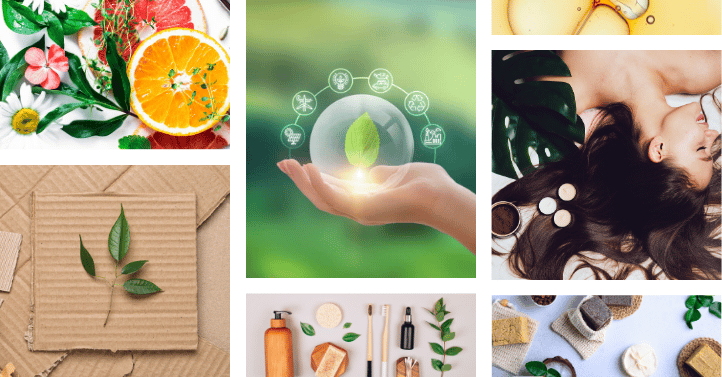The beauty and wellbeing industry continues to take meaningful steps toward a more sustainable future. As consumers have become more conscious about the environmental impact of their shopping decisions, beauty brands and retailers are taking bold steps to make their entire supply chain sustainable. What are some of their notable initiatives?
Here are five key sustainability practices in the beauty and wellbeing industry, along with key actions to support these:
1. Carbon neutral:
- Amorepacific, Beiersdorf, Colgate-Palmolive, Coty, Estée Lauder, Johnson & Johnson, Kao, L’Oréal, Procter & Gamble, Shiseido, and Unilever entered the Ecobeautyscore Consortium—a global environmental impact scoring system for cosmetic products, designed to help consumers make better purchase decisions for the environment.
- L’Oréal announced the construction of its new Research and Innovation facility in Clark, NJ, which will be designed to reduce energy use, resource consumption, and waste production.
- LVMH entered a multiyear contract with Origins Materials to adopt carbon-negative packaging for its cosmetics and perfume brands.
2. Clean formulas with sustainable ingredients:
- Actor Brad Pitt launched his new skin care line Le Domaine, formulated with ingredients that are 96% and 99% of natural origin. The product line features two patented active ingredients, GSM10 and ProGR3, and is developed without blacklisted ingredients, such as parabens, silicones, microplastics, mineral and synthetic oils, and animal-origin ingredients.
- Farmacy Beauty pledged to have 100% of its new products utilize upcycled ingredients, encompassing almost two tons of waste that would have ended up in landfills. Additionally, its newly launched 10% Niacinamide Night Mask is made with upcycled blueberry seed oil extract, which gets discarded by the food industry when making jam and candy.
3. Sustainable packaging:
- Kérastase debuted its first-ever, 100% recycled and recyclable aluminum bottles, which can be filled with lightweight eco-pouches that use 82% less plastic. The bottles can even be personalized with engravings.
- Procter & Gamble’s hair care brands Head & Shoulders, Pantene, Herbal Essences, and Aussie launched their first paper packaging innovations in the form of shampoo and conditioner bars. The bars have been formulated in a way where one bar equals up to two equivalent 250 ml liquid shampoo bottles.
- The new refills range of Johnson & Johnson’s Baby is available in recyclable paper-based cartons containing 90% less plastic than its existing baby toiletry bottles.
4. Water and ocean conservation:
- Mary Kay joined the UN Global Compact’s Ocean Stewardship Coalition, which seeks to leverage private sector involvement to increase ocean health awareness.
- Shiseido partnered with the World Surf League (WSL) for the launch of its Shiseido x WSL Ultimate Sun Protector Lotion SPF 50+ and Clear Sunscreen Stick SPF 50+, with a portion of the sales being donated to WSL’s efforts to empower ocean protection.
- Garnier, Merit, Schwarzkopf Professional, and Amika launched waterless shampoos and conditioners.
5. Zero waste:
- Target introduced Target Zero, a new program that aims to help customers identify products designed to reduce waste.
- Korres opened its second recycle lab in New York City, where plastic tubes, bottles, and caps are recycled to create everyday art objects. The brand also purchases 100% of its plant materials from Greek farmers before extracting the actives at its zero waste labs.
Our just-published Sustainability Beauty: United States Market Brief report highlights sustainability beauty trends spanning the hair care, nail care, and skin care sectors—all supported by key examples from beauty makers and retailers.

